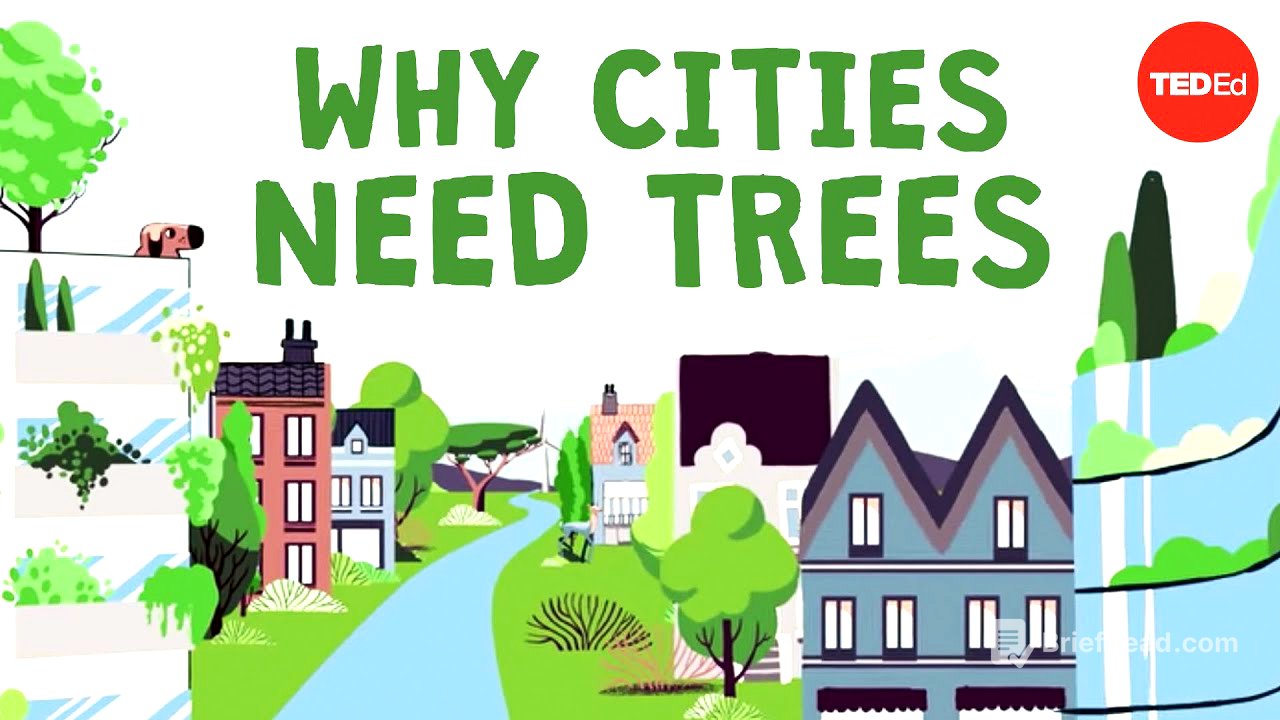TLDR;
This video explores the critical role of trees in urban environments, contrasting the fates of two ancient cities, Uruk and Anuradhapura, to illustrate the importance of trees for urban sustainability. It highlights the environmental and health benefits of urban trees, including water filtration, air purification, and positive impacts on mental health. The video also showcases examples of cities that have successfully integrated trees into their urban planning, such as Savannah, Copenhagen, Portland, and Singapore, emphasizing the need for continued efforts to create eco-friendly urban environments.
- Trees are essential for urban sustainability, as demonstrated by the contrasting fates of Uruk and Anuradhapura.
- Urban trees provide numerous environmental benefits, including water filtration, air purification, and climate change mitigation.
- Trees positively impact the health and well-being of city residents by improving air quality, reducing stress, and increasing attention spans.
- Successful urban planning integrates trees to enhance resilience, biodiversity, and overall quality of life.
The Tale of Two Cities [0:07]
The video introduces the story of Uruk and Anuradhapura, two ancient cities whose destinies were shaped by their relationship with trees. In 3000 BC, Uruk, a densely populated capital, expanded its irrigation system to support its growing population, leading to deforestation. Conversely, in Anuradhapura, Sri Lanka, trees were considered sacred due to the presence of an offshoot of the Bodhi tree, under which Buddha attained enlightenment. This reverence for trees in Anuradhapura influenced their urban planning and agricultural practices.
Impact of Deforestation and Reverence for Trees [0:42]
As Uruk expanded, deforestation led to the contamination of its water supply and soil salinization, making agriculture unsustainable. In contrast, Anuradhapura's irrigation system was designed to work with the surrounding forest, allowing the city to grow to twice the population of Uruk. Today, Anuradhapura still maintains a tree planted over 2,000 years ago, highlighting the long-term benefits of integrating nature into urban spaces.
Environmental Benefits of Urban Trees [1:40]
Trees act as natural sponges, absorbing storm water runoff and preventing floods, reducing the need for extensive drainage systems. Their roots help retain water, filter toxins, and prevent mudslides. Additionally, trees purify the air by trapping carbon and pollutants, making them crucial in combating climate change. These benefits underscore the importance of trees in maintaining a healthy urban environment.
Health Benefits of Urban Trees [2:23]
The video discusses the health benefits of urban trees, referencing 1870s Manhattan, where a lack of trees led to increased solar radiation absorption and poor air quality, contributing to disease outbreaks. Similarly, modern-day Hong Kong's limited tree cover results in poor air quality and respiratory issues. Research also indicates that green foliage increases attention spans, reduces stress levels, and improves recovery rates for hospital patients, emphasizing the positive impact of trees on mental and physical health.
Urban Planning with Trees [3:26]
The video highlights examples of cities that have successfully integrated trees into their urban planning. In 1733, Savannah, Georgia, was designed with parks within a 2-minute walk of every neighborhood. After World War II, Copenhagen directed new development along park-lined arteries to enhance resilience. Portland’s Forest Park preserves biodiversity, supporting various plant and animal species. Singapore has planted over 1.2 million trees since 1967, including vertical gardens called supertrees, which use solar energy and rainwater, demonstrating a strong commitment to urban greening.
The Future of Urban Forests [4:49]
With over 65% of the world's population projected to live in cities by 2050, the video emphasizes the importance of eco-friendly urban planning. While city planners can establish a foundation, it is up to the residents to ensure these urban forests become homes for more than just humans, promoting biodiversity and sustainable living.









